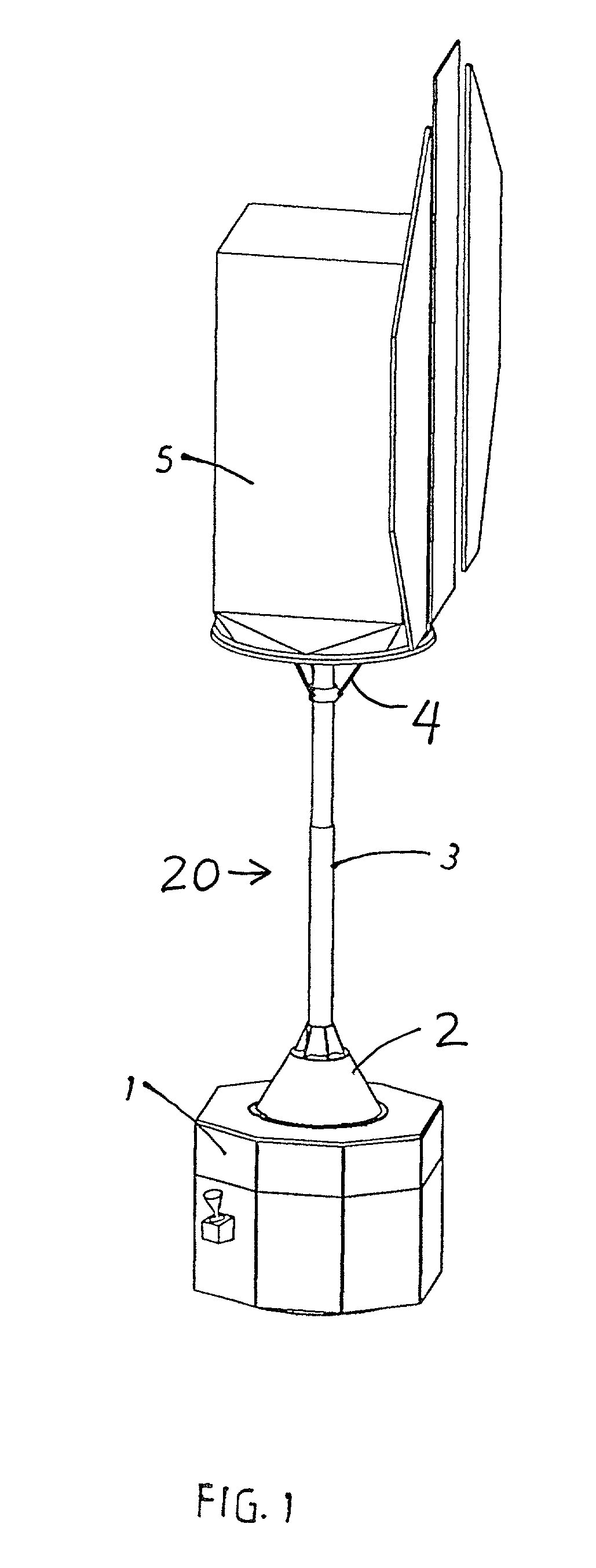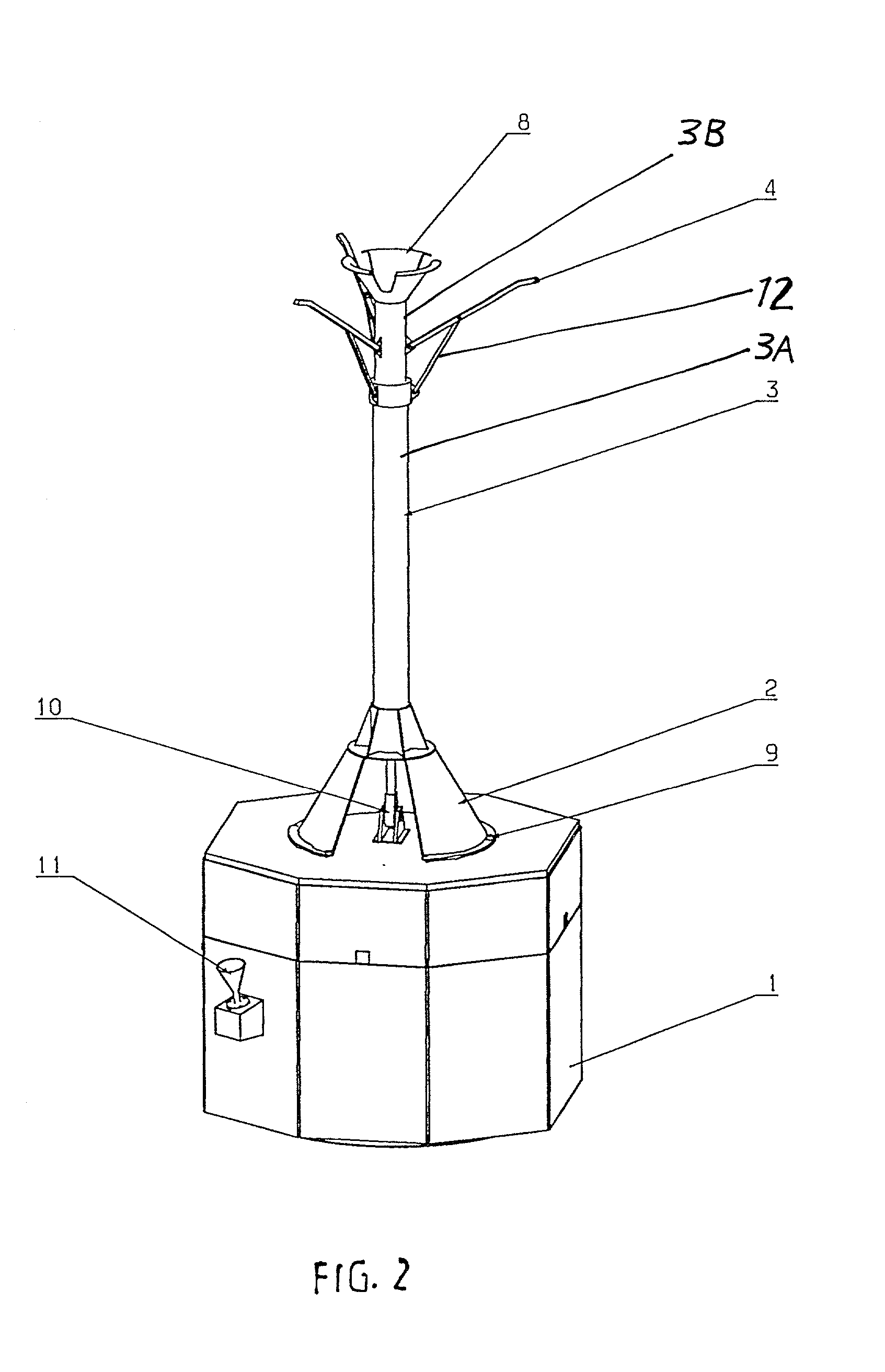Arrangement for recovering spacecraft
a spacecraft and arrangement technology, applied in the field of arrangement for recovering spacecraft, can solve the problems of affecting or endangering the optimal operation, defective spacecraft may have a negative influence, and interfere with other systems,
- Summary
- Abstract
- Description
- Claims
- Application Information
AI Technical Summary
Benefits of technology
Problems solved by technology
Method used
Image
Examples
first embodiment
[0024] In a first embodiment, the collar 3C is fixed to the outer pipe 3A (e.g. forms a part of the outer pipe). In this arrangement, extending the inner pipe 3B from the outer pipe 3A in a telescoping fashion (as indicated by the double-headed arrow T) will move the pivot joints 4A further away from the collar 3C with the pivot joints 12A, whereby the pivot linkage formed by the pivot struts 12 causes the spreader arms 4 to spread radially outwardly away from the axis of the holder element 3. On the other hand, telescopingly sliding the inner pipe 3B into the outer pipe 3A will have the effect of pivoting the spreader arms 4 radially inwardly toward the axis of the holder element 3 and pointing substantially axially along the axis of the holder element 3 away from the recovery craft 1.
second embodiment
[0025] In effecting the radial spreading deployment of the spreader arms 4, the collar 3C is axially slidable along the inner pipe 3B and / or the outer pipe 3A, or in general along the holder element 3. Thereby, an axial sliding displacement of the collar 3C toward the recovery craft 1 will cause a radial outward spreading of the spreader arms 4, while an axial sliding of the collar 3C away from the recovery craft 1 will cause a radial inward pivoting of the spreader arms 4 closer to the axis of the holder element 3. With such a slidable collar 3C, the radial spreading deployment of the spreader arms 4 can be independent of the telescoping adjustment of the pipes 3B and 3A of the holder element 3 (or the telescoping embodiment can be omitted in an alternative embodiment). The collar 3C may be controlled and driven in a sliding manner using any conventionally known actuator means.
[0026] The adjustable spreading deployment of the spreader arms 4 is appropriately controlled to selective...
PUM
 Login to View More
Login to View More Abstract
Description
Claims
Application Information
 Login to View More
Login to View More - R&D
- Intellectual Property
- Life Sciences
- Materials
- Tech Scout
- Unparalleled Data Quality
- Higher Quality Content
- 60% Fewer Hallucinations
Browse by: Latest US Patents, China's latest patents, Technical Efficacy Thesaurus, Application Domain, Technology Topic, Popular Technical Reports.
© 2025 PatSnap. All rights reserved.Legal|Privacy policy|Modern Slavery Act Transparency Statement|Sitemap|About US| Contact US: help@patsnap.com



